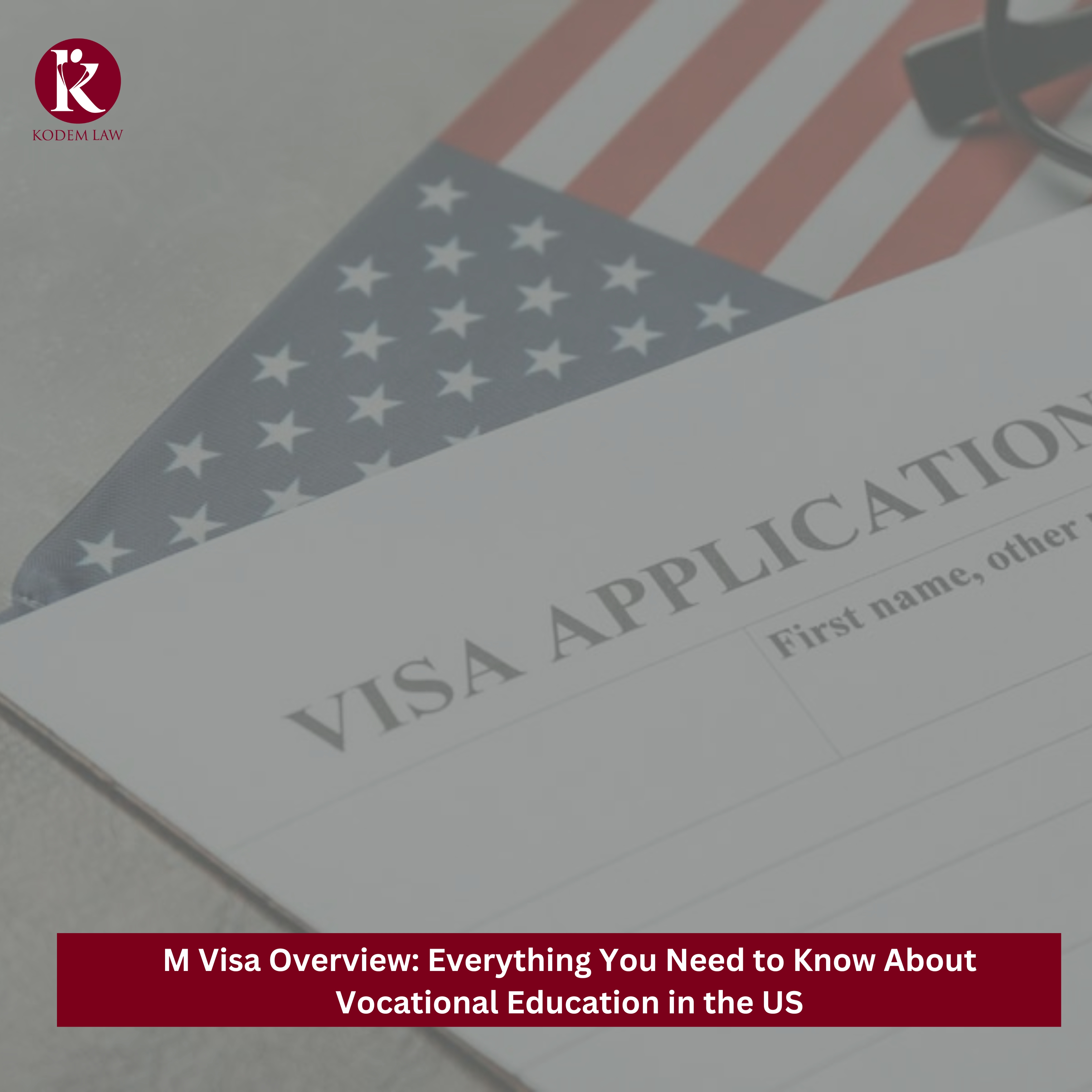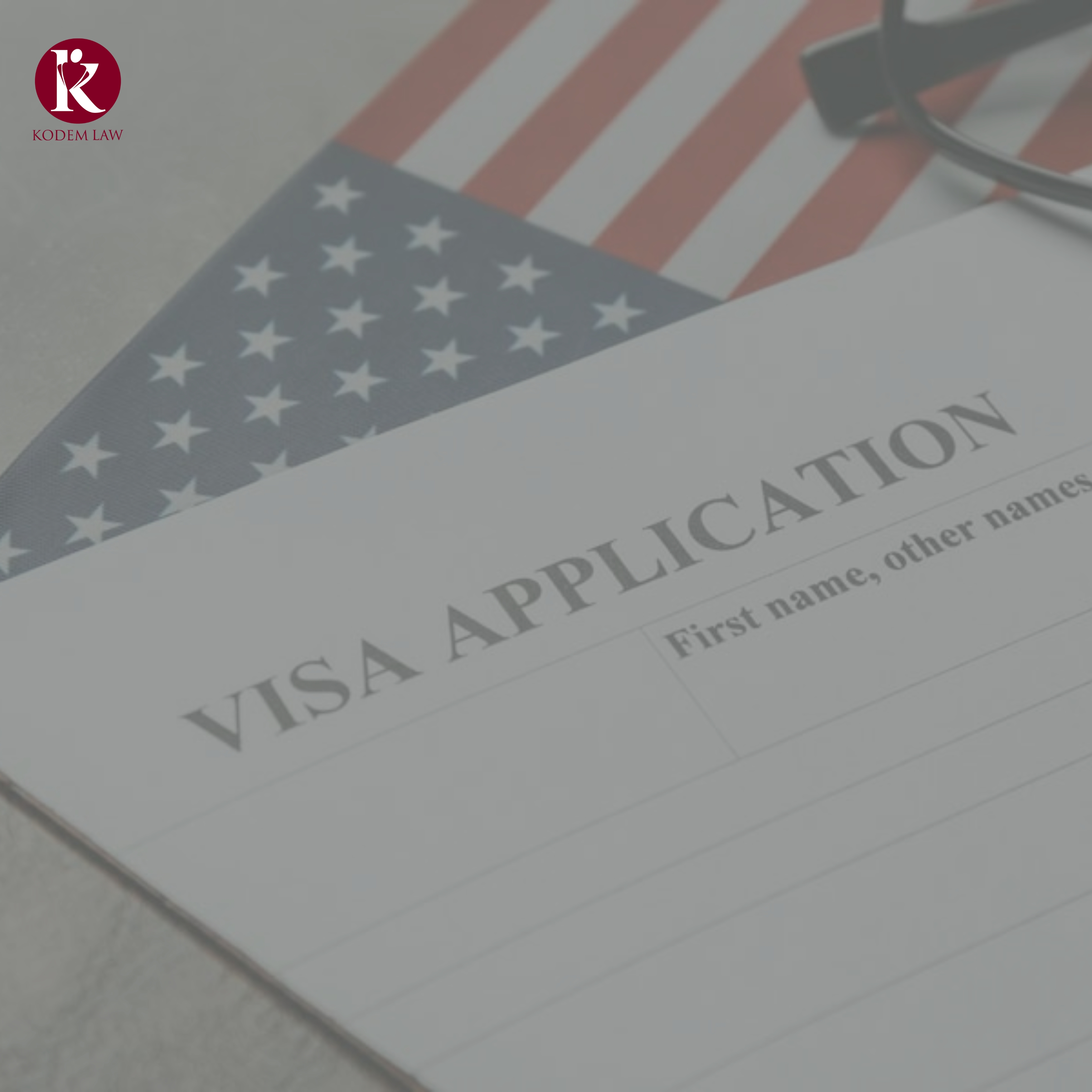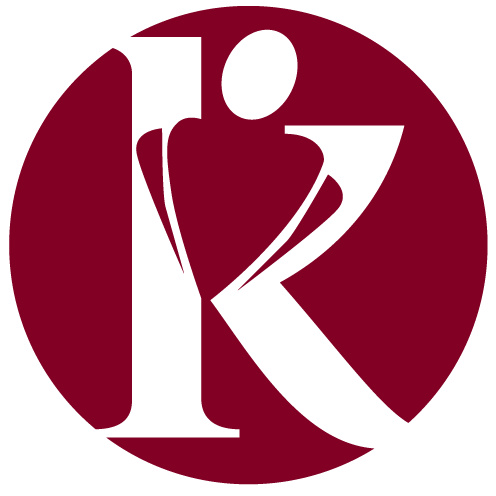
What is an M Visa?
The M Visa, specifically the M-1 visa, is a type of U.S. non-immigrant visa designed for international students who wish to pursue vocational or non-academic training programs in the United States. This visa allows students to enroll in technical or vocational schools and is distinct from the F-1 visa, which is intended for academic students. The M-1 visa enables students to gain practical skills and training in fields such as culinary arts, mechanical studies, and other specialized trades, thereby contributing to their professional development and career advancement.
Types of M Visas
- M-1 Visa: For students pursuing vocational or non-academic studies.
- M-2 Visa: For dependents (spouse and children) of M-1 visa holders. M-2 dependents can study part-time but cannot work.
- M-3 Visa: For border commuter students from Canada or Mexico who commute to the U.S. for vocational or non-academic studies.
What are M-1 Visa Eligibility Requirements?
To qualify for an M-1 visa, applicants must meet the following requirements:
- Acceptance into a U.S. vocational or non-academic program
- Proof of sufficient financial resources to cover tuition and living expenses
- A residence abroad with no immediate intention of abandoning it
- Proficiency in English or enrollment in an English language course
Difference Between M-1 and Other Student Visas (eg: F-1 Visa)
| Criteria | M-1 Visa (Vocational Training) | F-1 Visa (Academic Students) |
| Purpose | For vocational and technical training programs | Academic studies at colleges, universities, or language training programs. |
| Eligibility | You must complete the required studies, be accepted by a USCIS-approved school, prove English proficiency and financial support, and show ties to your home country. | You must enroll full-time in a SEVP-approved U.S. school, prove English proficiency and financial support and show home country ties. |
| Course Duration | A candidate living in the US on an M-1 visa can only attend a vocational program for one year before returning to the home country. | To study in the USA, an F-1 visa is basically for academic students, and upon obtaining this visa, students can study in the USA. The F-1 visa is valid for five years and upon expiration, students can re-apply for an extension. The duration of the academic programs can be extended. |
| Practical Training | Limited to 6 months of practical training after completion of the program | Optional Practical Training (OPT) for up to 12 months, STEM extensions available |
| Work Authorization | On-campus work is not allowed; limited off-campus work only with authorization | On-campus work allowed; off-campus work with authorization (CPT/OPT) |
| Full-time Enrollment | Required to maintain visa status | Required to maintain visa status |
| Extensions | Extensions possible under specific circumstances | Extensions possible through program extensions or changes |
| Dependents | M-2 visa for dependents, limited rights | F-2 visa for dependents, limited rights |
| Transfers | Transfers between schools are not easily allowed | Transfers between schools allowed |
| Employment Restrictions | No employment allowed except for practical training | Employment allowed under CPT and OPT |
| SEVIS Fees | Required | Required |
Application Process for M-1 Visa
The M-1 visa application process includes the following steps:
- Obtain Form I-20: Receive the Certificate of Eligibility for Nonimmigrant Student Status from your U.S. school.
- Pay the SEVIS I-901 Fee: This fee is required to enroll in the Student and Exchange Visitor Information System (SEVIS).
- Complete the DS-160 Form: Fill out the online nonimmigrant visa Application and print the confirmation page.
- Schedule a Visa Interview: Book an appointment at a U.S. embassy or consulate in your home country.
- Attend the Visa Interview: Provide the necessary documentation and answer questions about your program and intentions.
Student and Exchange Visitor Program (SEVP) Vs. Student and Exchange Visitor Information System (SEVIS)
| Aspect | SEVP (Student and Exchange Visitor Program) | SEVIS (Student and Exchange Visitor Information System) |
| Definition | Oversees schools and F/M visa students | Web-based system maintaining student records |
| Role | Oversees compliance with immigration laws | Maintains student visa data |
| Responsibility | Ensures schools comply with regulations | Tracks and updates student information |
| Certification | Certifies schools to host international students | Maintains records of SEVP-certified schools |
| Data Management | Oversees schools and international students | Maintains and updates student records |
| Purpose | Monitor and regulate the F and M visa program | Manage and track student visa statuses |
| Administration | U.S. Department of Homeland Security | U.S. Immigration and Customs Enforcement |
| Online System | No online system (regulatory body) | Web-based system for data management |
Financial Requirements for M-1 Visa
1. Proof of Sufficient Funds
- You must demonstrate that you have enough funds to cover tuition and living expenses for the duration of your studies in the United States.
- This can typically be shown through bank statements, financial sponsorship letters, or scholarship awards.
2. Tuition Fees:
- The tuition fees for M-1 visa programs can vary widely depending on the institution and the specific program of study.
- Institutions will provide a breakdown of tuition fees for the entire program duration or per semester.
3. Living Expenses:
- Living expenses include costs such as accommodation, food, transportation, health insurance, and personal expenses.
- The estimated living expenses can also vary based on the location of the institution and the student’s lifestyle.
4. Financial Proof:
- Bank statements showing sufficient funds to cover tuition and living expenses.
- Financial sponsorship letters if funds are provided by a sponsor.
- Scholarship award letters, if applicable.
- Proof that you can access sufficient funds for your dependents if they will accompany you.
5. Estimating Tuition Fees:
- Contact the institution you plan to attend for the most accurate tuition fee information.
- Institutions often provide an estimated cost of attendance, which includes tuition, fees, and living expenses.
6. Estimating Living Expenses:
- The estimated living expenses can vary greatly depending on the location and lifestyle.
- Many institutions provide an estimated cost of living on their websites, which can help in estimating these expenses.
7. Documentation:
- Prepare all necessary documents in advance to avoid delays in your visa application process.
- Keep originals of all financial documents as well as copies.
8. Currency and Conversion:
- All financial documents should be in English or accompanied by an English translation.
- Be aware of currency conversion rates when calculating your financial needs.

What Does the Interview Process Include?
The visa interview process typically includes the following steps:
- Appointment Scheduling: You will schedule an appointment for your visa interview at the U.S. embassy or consulate in your home country.
- Document Preparation: Gather all required documents, which may include your passport, Form DS-160 confirmation page, Form DS-2019 (for J-1 visa), If you are applying for an F-1 student visa or a M-1 student visa you need to carry Form I-20 along with application fee receipt, SEVIS fee payment receipt, and any additional documents specific to your visa category.
- Arrival and Security Check: Arrive at the embassy or consulate on time. You will go through a security screening process before entering.
- Interview: You will be called for your interview with a consular officer. The interview is a critical part of the process, during which the officer will assess your eligibility for the visa. Be prepared to answer questions about your intended stay in the U.S., ties to your home country, and ability to fund your studies.
- Decision: After the interview, the consular officer will determine whether to approve or deny your visa application. If approved, you will receive instructions on how to collect your passport with the visa stamp.
- Visa Issuance: If your visa is approved, the visa will be placed in your passport. Note that a visa does not guarantee entry into the U.S.; it only allows you to travel to a U.S. port of entry and request permission to enter the country.
Tips for Preparing for the Visa Interview
- Know Your Documents: Familiarize yourself with all the documents you need to bring, and ensure they are organized and easy to access.
- Practice Interview Questions: Prepare for the interview by practicing common visa interview questions and rehearsing your answers.
- Dress Appropriately: Dress professionally and formally for the interview.
- Be Honest and Clear: Be honest in your answers and provide clear, concise responses.
- Demonstrate Ties to Your Home Country: Show evidence of strong ties to your home country, such as family, employment, or property ownership.
- Be Confident: Remain calm and confident during the interview.
Duration and Extensions
- Duration: The duration of M-1 visa can vary depending on your specific program of study or exchange visitor program. Typically, the visa is valid for the duration of your program, plus a period for practical training or academic training if applicable.
- Extensions: You may be eligible to extend your stay in the U.S. under certain circumstances. This can include program extensions, changes of program, or applying for Optional Practical Training (OPT) or Academic Training (AT) after completing your program.
Requirements for Maintaining M Visa Status While in the U.S.
Maintaining M visa status requires students for:
1. Full-Time Enrollment:
- Maintain full-time enrollment in your academic program.
- This means being enrolled in the minimum number of credit hours or courses required by your institution.
2. Reporting Changes to DSO:
- Report any changes in address or academic program promptly to your Designated School Official (DSO).
- This ensures that your information in the Student and Exchange Visitor Information System (SEVIS) is accurate and up-to-date.
3. Avoiding Unauthorized Work:
- Do not engage in unauthorized employment in the U.S.
- This includes both on-campus and off-campus work unless specifically authorized by USCIS or your DSO.
Work Authorization for M-1 Visa
M-1 visa holders are limited in their employment opportunities. They may participate in practical training related to their field of study after completing their program but must obtain authorization from USCIS. Off-campus employment is generally not permitted.
1. Eligibility for Practical Training:
- M-1 visa holders are eligible for practical training only after completing their vocational or technical program
- Training must be related to the field of study
2. Duration of Practical Training:
- Limited to one month for every four months of study
- The maximum duration is six months
3. Authorization Required:
- Must obtain authorization from USCIS before beginning practical training
4. Application Process for Practical Training:
- Submit Form I-765, Application for Employment Authorization
- Include supporting documents, such as a letter from the school
- Pay the application fee
5. Off-Campus Employment Restrictions:
- Generally not permitted for M-1 visa holders
- Unauthorized employment can result in loss of visa status and potential deportation
6. Steps to Apply for Practical Training:
- Complete your program
- Obtain a recommendation from your designated school official (DSO)
- File Form I-765 with USCIS
- Wait for Employment Authorization Document (EAD) approval
- Begin practical training after receiving the EAD
7. Maintaining Compliance:
- Stay informed about USCIS regulations regarding M-1 visa employment
- Consult with your DSO before accepting any employment or beginning practical training
Frequently Asked Questions
1. What is the duration of stay allowed on an M-1 Visa?
The duration of stay on an M-1 Visa is determined by the length of your vocational or technical program, as indicated on Form I-20, plus an additional 30 days to prepare for departure. However, the total stay cannot exceed one year unless extended.
2. Can I work while on an M Visa?
M-1 visa holders are generally not permitted to work during their studies. However, under certain conditions, they may be eligible for practical training related to their field of study after completing their program.
3. What should I do if my M Visa Is about to expire and I haven’t completed my program?
If your M Visa is nearing expiration and you haven’t completed your program, you should apply for an extension using Form I-539 and obtain a new Form I-20 from your school. Ensure you apply at least 15 days before your visa expiration.
4. What documents are required for the M Visa extension application?
To apply for an extension, you need:
- Form I-539, Application to Extend/Change Nonimmigrant Status
- A new Form I-20 from your school
- Proof of financial support to cover the extended period
- Any additional documents as specified by USCIS
5. Can my dependents stay with me If I extend my M Visa?
Dependents on M-2 visas can remain in the U.S. as long as the primary M-1 visa holder maintains valid status. If you extend your M-1 visa, your dependents must also apply for an extension using Form I-539.
6. Is there a Limit to how many times I can extend my M Visa?
Extensions are granted based on the specific needs of the student’s program and are subject to USCIS approval. There is no fixed limit on the number of extensions, but each request must be justified and supported by your educational institution.

